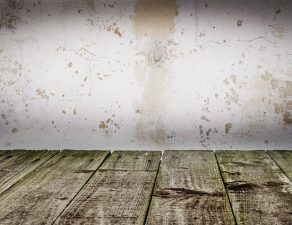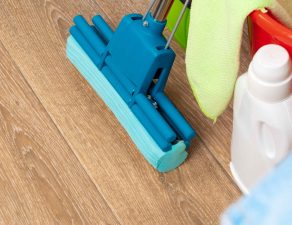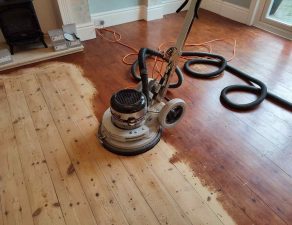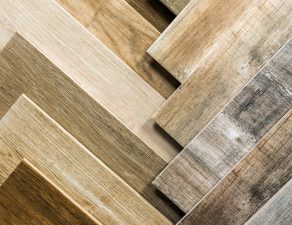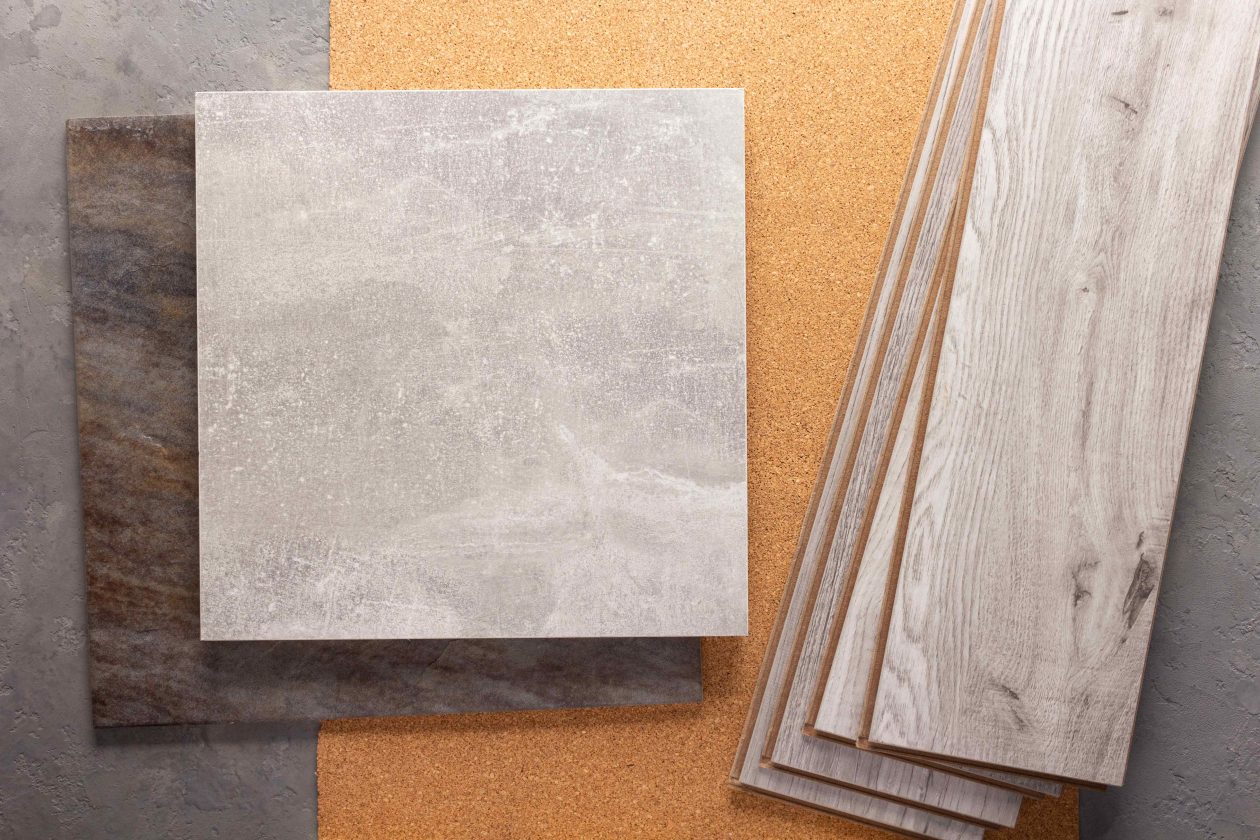
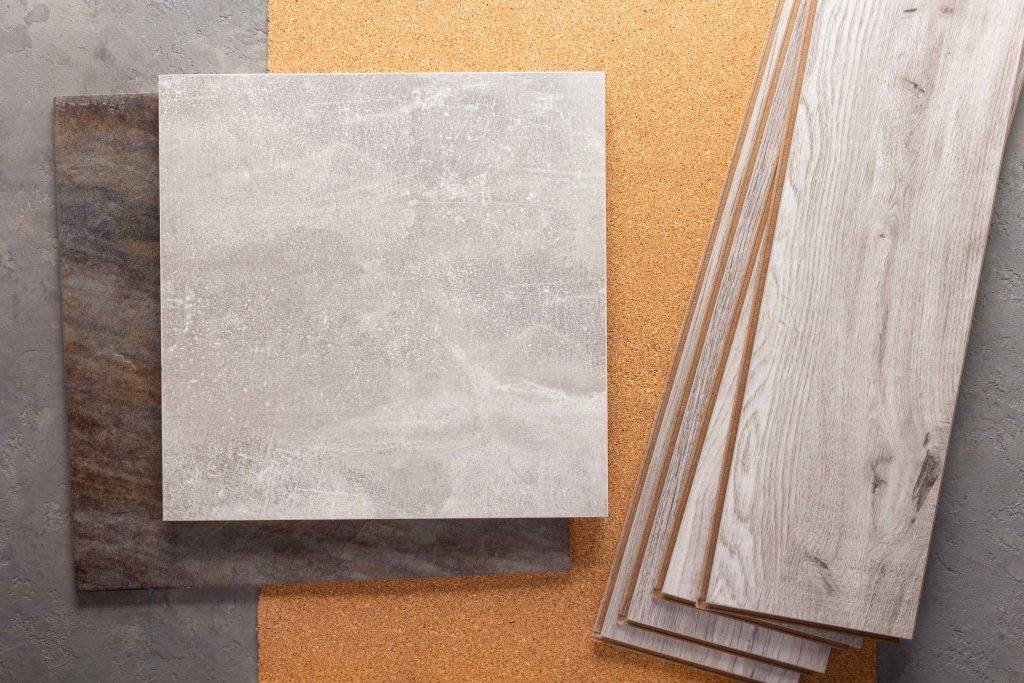
Are you looking for new flooring options but need help deciding whether to choose wood flooring or tiles? Choosing the suitable flooring material is an important decision, as it can impact the overall appearance and vibe of your home or office, as well as your budget and maintenance requirements. In this article, we’ll compare wood flooring vs. tiles and discuss the pros and cons of each option, as well as cost, design considerations, and maintenance requirements. By the end of this article, you’ll better understand what you should know before deciding on the best flooring material for your needs.
Different types of tile flooring
Tile flooring has been an integral part of home design for centuries. It is currently enjoying its time in prominence. Choosing the right one can be tough with such a wide range of tile varieties.
Among the most popular options for tiles are:
- Ceramic tile is made from kiln-firing clay at extreme temperatures to generate a robust and resilient ceramic tile flooring solution.
- Porcelain is a refined clay tile fired at a higher temperature compared to regular ceramic, making it more resilient and less likely to be stained.
- Cement tile is set and left to solidify at room temperature rather than being subjected to high temperatures in a kiln. It has higher porosity compared to clay tile, yet it is one of the few types of tiling that can be resurfaced.
- Stone tiles, such as slate, granite, marble, and sandstone, are popular natural options that provide a vast assortment; each piece of stone tile is unique.
- Wood-look tile provides the advantage of having a tiled floor while simultaneously giving off the appearance of natural wood.
Different types of wooden flooring
Solid hardwood flooring: Solid hardwood flooring is made from a single piece of wood, typically 3/4 inch thick. It can be sanded and refinished several times, making it a dependable and long-lasting flooring option. It comes in a variety of wood types, including oak, maple and cherry, and can be stained to match any decor.
Engineered hardwood flooring: Engineered hardwood flooring is made from a thin layer of natural wood on top of a core of high-quality plywood. It is more resistant to moisture than solid hardwood flooring, making it a good choice for areas with high humidity or moisture. It also comes in a variety of wood types and finishes.
Bamboo flooring: Bamboo flooring is a sustainable and eco-friendly option, as bamboo is a fast-growing grass that can be harvested without killing the plant. It is also durable and scratch-resistant, making it a good choice for high-traffic areas. Bamboo flooring comes in various styles and finishes, from natural to carbonized.
Cork flooring: Cork flooring is made from the bark of the cork oak tree and is another eco-friendly option. It is soft and comfortable underfoot, making it a good choice for kitchens and playrooms. Cork flooring is also hypoallergenic, as it does not absorb dust or other allergens.
Reclaimed wood flooring: Reclaimed wood flooring is made from salvaged wood from old buildings and structures. It has a unique character and patina that cannot be replicated in new wood. Reclaimed wood flooring is also an environmentally friendly option, as it repurposed wood that would otherwise be discarded and replaced with solid wood.
If you need more info on that, make sure to read our complete guide on the different types of wooden floors.
The best areas to place tiles and wood floors.
When it comes to choosing between tiles and wood floors, one of the decisive factors to consider is where you’ll be placing the flooring. Different rooms and areas of your home or office may have different requirements when it comes to flooring based on factors such as moisture, foot traffic, and design.
Most suitable areas for hardwood flooring
This type of flooring is widely favored for living rooms, hallways, and bedrooms due to its classic, luxurious look. Nevertheless, it should not be installed in areas prone to temperature or humidity changes like bathrooms, kitchens, utility rooms, and porches.
Areas for tile flooring
Verifying porcelain tiles requires a water absorption rate of no more than 0.5%, making it an ideal flooring choice for wet areas.
If you are deciding between tiles and laminate flooring for your entryway, kitchen, or bathroom, it is essential to take into account the slip-resistance of each material. Unglazed tiles have less slipperiness when wet than glazed tiles do.
Durability and maintenance
Properly maintaining your new floors can prolong the life of whichever type of flooring you choose. Some flooring types are easier than others in this regard. Luckily, both wood and tile can be long-lasting and durable options. There are just a few things to consider when it comes to maintaining wood vs. tile.
Overall, both wooden floors and tile flooring can be durable and easy to maintain with proper care and maintenance.
Wooden floors require regular sweeping or vacuuming to remove dirt and debris. Spills should be wiped up immediately to prevent water damage. They also require periodic refinishing or resealing to maintain their appearance and protect against wear and tear. If you are considering installing a hardwood floor in an area with a lot of foot traffic, it is vital to select a wood type that has a high rating on the Janka Scale. This scale measures the amount of pressure needed to cause damage to the wood. The higher the score, the more durable the wood is.
Bear in mind that the wooden floor may get damaged if they are exposed to sun light.
Tile flooring is relatively easy to maintain, as it can be swept or vacuumed to remove dirt and debris, and spills can be wiped up with a damp cloth. Grout lines may require periodic cleaning and sealing to prevent stains and discoloration. Tile flooring is extremely durable and resistant to scratches, dents, and moisture. However, tiles can crack or chip if heavy objects are dropped on them, and they may require periodic replacement if damaged.
Cost of tile and wooden flooring
Price is typically a significant factor to consider when comparing tile and wood floors. The initial cost is, of course, essential, but it is also beneficial to consider the costs associated with installation, the potential return on investment, and durability.
Average cost per square meter
Engineered hardwood with a veneer made from common tree species such as oak typically ranges in price from £2.50 to £8 per square foot. At the same time, more exotic and rare varieties can be considerably pricier. Solid hardwood may cost the same or even higher – sometimes reaching up to £12
Porcelain and ceramic tiles typically range from approximately £1.20 to £4 per square foot. In contrast, stone tiles tend to be significantly more expensive.
Installation costs of wood vs. tile?
Unless you possess a considerable amount of expertise and knowledge with the process of replacing flooring, it is generally recommended to enlist the help of an experienced professional. The only exception to this rule would be materials that are designed for click-lock or click-together installation, which can typically be fitted together without assistance.
Finding a local retailer when installing either of these flooring types is essential, as it requires great accuracy and expertise. We suggest that you consult with the retailer regarding the cost of the project, which may differ depending on your location and the extent of work needed.
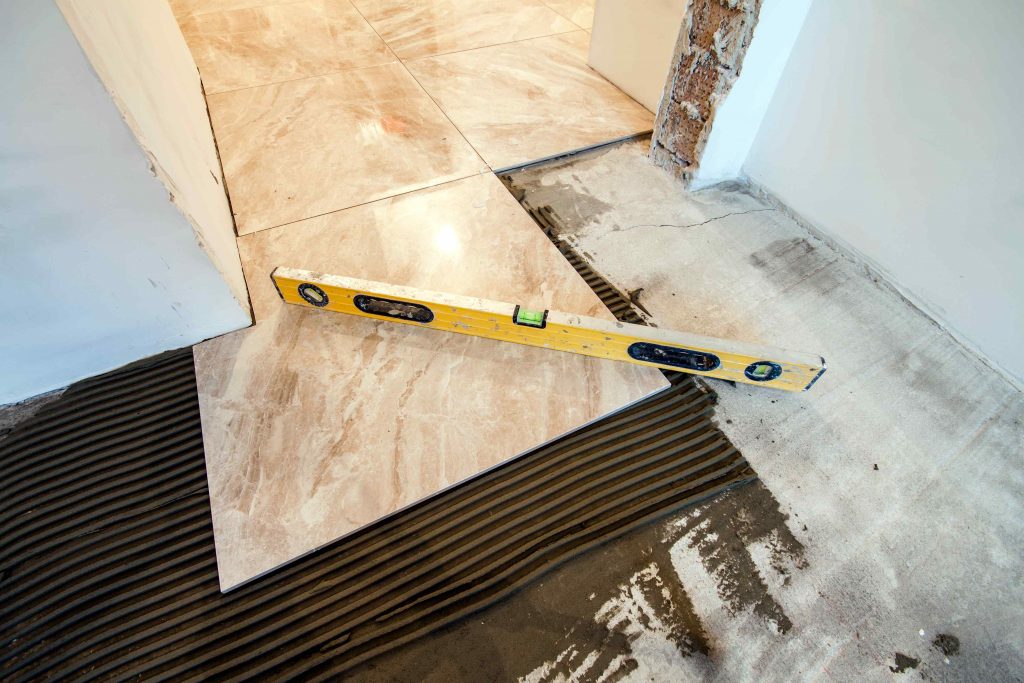
More factors to consider
Underfloor heating capabilities
The robustness and solidity of ceramic tiles make them an excellent choice for underfloor heating. They have outstanding conductivity and a high thermal capacity, allowing the heat from the pipes below to be quickly transmitted. In contrast, when incorporating a wooden floor with underfloor heating, choosing the appropriate type of wood is essential.
To avoid shrinking, the wood used with underfloor heating should have a low humidity level. Moreover, due to its poor thermal conductivity, utilizing wood can lead to the diminished performance of your underfloor heating system. Timber is far more thermally stable than other hardwoods and is much better able to withstand changes in heat and humidity.
Which flooring is noisier?
Wood and tile flooring may be louder than other materials. Older wood floors can often creak and squeak. However, hardwood generally dampens sound more effectively than tile. To reduce noise levels, add area rugs or self-adhesive carpet tiles.
Wooden flooring or tiles – which are more slippery?
The Coefficient of Friction (COF) is used to measure the slip resistance of a given flooring type, and many suppliers provide this information in their product specifications. To determine the COF for your selected flooring option, it is recommended that you contact your local flooring retailer.
Glazed tiles may be more prone to slipperiness, whereas unglazed tiles generally offer better traction. This is particularly relevant when selecting a material for areas where liquids are likely to be spilled. Nonetheless, this factor is less applicable in the case of wooden flooring in dry locations.
What if you have kids and pets?
When you make a decision about the right flooring surface, you have to think about what your family needs too.
Having children and pets in the home can make it more challenging to maintain the pristine condition of hardwood floors. Spills, fall, and scratches from claws can all detrimentally affect wood flooring. Nevertheless, if your kids enjoy running around the house with their socks on, then wood may be the better option for you.
In contrast, tiled floors are more resistant to water and abrasion; however, they can be unsafe when wet. Therefore, it is advisable to opt for slip-resistant tiles in areas where children and active pets tend to move around a lot.
Advantages of wooden flooring over tiles
Each flooring type has its own unique benefits and disadvantages. Let’s start with some of the pros and cons of hardwood.
Hardwood increases home value
Real Estate Agencies assert that installing hardwood floors is a great way to increase the worth of your home, with an approximate return on investment ranging from 70% to 80%.
Wooden flooring is warmer
Solid materials can lessen the temperature variations in your house since they can store and take up heat. Hardwood floors have a greater thermal mass than other materials, enabling them to retain heat for an extended period. As natural products, they keep warmth much more effectively than any.
Everlasting Style
Wood flooring has the advantage of being able to blend into any interior design concept in your residence. It is a timeless material that will look great no matter how often you choose to redecorate.
Disadvantages of wooden floors
The wood floor has it’s flaws, despite looking at times as the clear winner.
They require more maintenance.
Hardwood needs more attention than tile. We suggest sweeping daily to remove any dirt particles to avoid scratching. Additionally, we at Alpha Floor Sanding recommend using products specifically made for wood and refinishing them every seven to ten years.
Read more on How to maintain your hardwood floors.
Cost-effective
When taking into account the cost per unit area, along with the fee for expert installation and additional upkeep, wood can usually be more expensive than tile in total. This may present a challenge if you are on a tight budget.
Advantages of tiles as a flooring option
Let’s discuss some of the perks of having tile floors and make the best decision for you. Here are some key benefits.
Durability and lower maintenance
Tile floors are typically easier to maintain, requiring only minimal upkeep, such as periodic re-grouting. Additionally, tile is less likely to incur dents or scratches.
Tiles are cheaper
In general, tiles are the cheaper flooring option. This is the case not only when it comes to material costs but also in terms of products for maintenance. Taking the time to install tile, even if it’s just a single one, would take much less time and therefore less money spent.
Disadvantages of tiles
Let’s discuss some of the perks of having tiles and make the best decision for you. Here are some key benefits.
Can be slippery
Even if you decide to go with the most slip-resistant tiles, they are still susceptible of getting wet to some extent and becoming slippery. Therefore even a moment of distraction can result in a fall and an injury.
Tiles are cold
If you are bare feet or with some socks on it won’t make a huge difference for you. Tiles will still be cold for your feet. Walking or just standing on them for some time will make you feel the difference from other parts of your home.
FAQ
What flooring is best to sell a house?
A hardwood floor provides the best value when it comes to recouping expenses from replacing your flooring before you put your house on the market, with a potential return of as much as 80%.
Is it better to have light or dark floors?
Darker floors are more suitable for expansive rooms and open-plan designs. Another factor to take into account is the frequency of floor cleaning. Light hardwood flooring can conceal minor imperfections, dust and dirt. However, any more significant blemishes will be noticeable.
In conclusion
Tile vs wood can be a difficult decision, as both options have their pros and cons. Wood flooring offers a warm and natural look but can be vulnerable to scratches and water damage. Tiles, on the other hand, are durable and easy to maintain but can be cold and hard underfoot. Ultimately, the best choice for your home or office will depend on your personal preferences, budget, and lifestyle factors such as foot traffic and exposure to moisture. By weighing the pros and cons of each option and considering where the flooring will be placed, you can make an informed decision that will enhance the elegance and functionality of your space for years to come.

